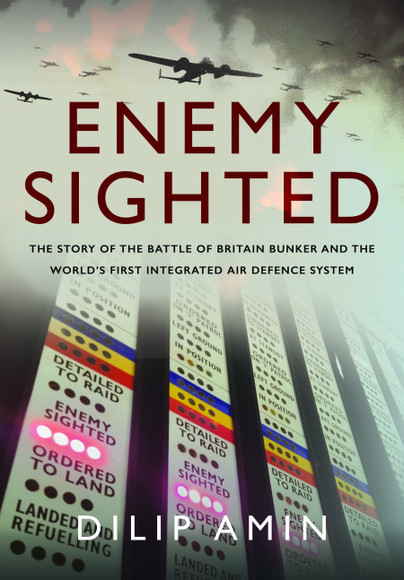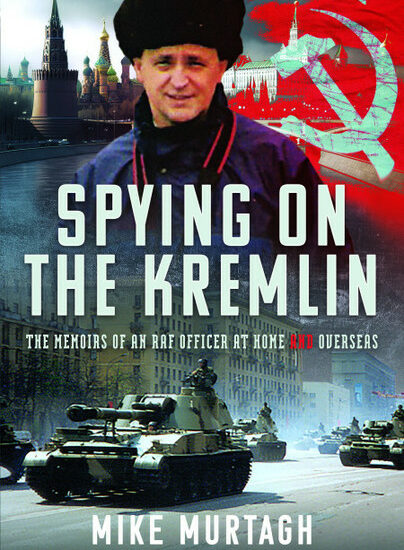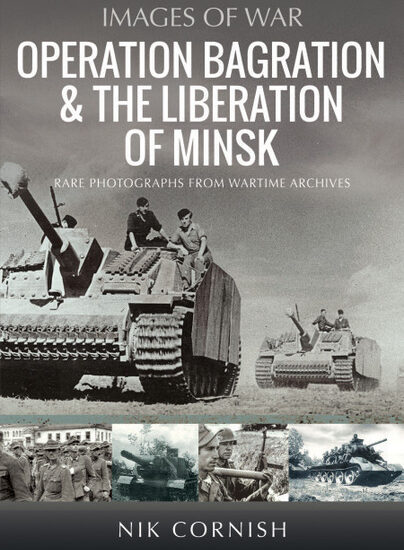Author Guest Post: Dilip Amin
WINSTON CHURCHILL ON BATTLE OF BRITAIN DAY
Eighty-Four years ago, Fighter Command and the Luftwaffe fought each other to contest air supremacy over Britain. The outcome would determine if Operation Seelöwe (or Sealion), Hitler’s planned invasion of the British Isles, would go ahead or be stopped in its tracks. The attackers had to win, and win decisively, whereas the defenders had just to not lose and continue to exist as an effective aerial shield. The British consider the Battle of Britain to have started officially on 10 July, lasting four months until 31 October. Sunday 15 September was seen as the day that the Battle turned decisively in favour of Fighter Command … it was recognised then and is celebrated still as ‘Battle of Britain Day’. Its magnitude is acknowledged in my book ‘Enemy Sighted’ by the fact that I chose to dedicate two entire chapters to telling the story of this zenith. What follows is but a brief illustration of some of what happened on that momentous day during the Summer of 1940.

Sunday, 15 September will be a day of great significance. The orders sent to 11 Group’s Sector stations from the underground Operations Room at Uxbridge, and the consequential engagements over London and South East England, will be monumental. The date, now immortalised as ‘Battle of Britain Day’, will not only alter the outcome of the battle, but also, the course of the Second World War itself. The Luftwaffe, believing Fighter Command is down to its last few fighters, plans to deliver a decisive blow, leaving the Royal Air Force too weak to ward off invasion. By the end of this day, they will realise that their belief is misplaced.
Understanding the magnitude of the decisions being made there, Prime Minister Winston Churchill and his wife, Clementine, have decided to visit the Bunker, travelling from their country residence at Chequers. The couple arrive around 10.30 hours and are met by Air Vice-Marshal Keith Park who takes them to their seats behind the glass gallery. Park reminds the Premier that the Bunker’s air ventilation system cannot deal with cigarette or cigar smoke. So Churchill sits acquiescently clenching an unlit cigar between his teeth, where, like the Greek Gods on Mount Olympus, he will soon look down and watch the burgeoning threat unfold and the counteroffensive rise up into the sky.

At 10.40 hours, Radar stations in 11 Group detect enemy aircraft taking to the air near Boulogne. By 11.00 hours, further reports signal a large formation massing over the Pas de Calais, rousing the women stood around the large plotting table into action. Like regimented croupiers, wooden blocks and coloured arrows are hurriedly prepared, ready to be placed on the map and moved around with croupier style sticks. This then, is the process by which the Gods looking down will be able to watch the large aerial battle being fought in the skies above Southern England, as the Royal Air Force’s young men duel with the Luftwaffe’s young men, in order to repel their fusillade on London.
Churchill, observing the incoming raids being pushed along the plotting table comments, ‘There appear to be many aircraft coming in.’ Park calmly reassures the Prime Minister, ‘There’ll be someone there to meet them.’

The Duty Senior Controller has to think and act fast. He immediately deploys two squadrons of Spitfires and at 11.05 hours a call is made to the Biggin Hill Sector Controller, call sign ‘Carfax’. Carfax, in turn gives the order for 72 Squadron, call sign ‘Tennis’ and 92 Squadron, call sign ‘Gannic’ to ‘Scramble’, instructing their combined twenty Spitfires to take off immediately. The Sector Controller’s voice crackles over the radio, providing clipped instructions:
‘Hello Gannic Leader. Gannic Leader. Carfax calling. Two Hundred Plus coming in over Red Queen. Vector One Two Zero. Angels Two Five.’
Flight Lieutenant Brian Kingcombe, 92 Squadron’s temporary Commanding Officer replies, ‘Hello Carfax. Gannic Leader. Message received. Over.’
‘Hello Gannic. Gannic Leader. Carfax calling. Watch out for Snappers above! Many Snappers above. Hear me?’
‘Loud and clear Carfax. Over and out.’
‘Red Queen’ is the code for Canterbury, used by Fighter Command to confuse German eavesdroppers. ‘Vector’ is the compass heading, which needs to be followed to reach their destination. ‘Angels’ is height, given in thousands of feet. ‘Snappers’ are the enemy fighters who are chaperoning their bombers. The Spitfires are to patrol over Canterbury at 25,000 feet, or 6,706 metres, and engage with the ‘umbrella’ escort of Messerschmitt Me 109 fighters flying above the bombers.

The deadly game of aerial chess now continues at a frantic pace. The Senior Controller scrambles a further six squadrons, totalling seventy-four Hurricanes, into the air. Their task will be to engage with the lower, slower bomber formations now approaching Britain, while the Spitfires of 72 and 92 Squadrons lock horns with the Messerschmitt Me 109 fighter umbrella.
As the Spitfires approach Canterbury, they start to scan the sky. Have they been scrambled in time? Do they have the advantage of height? Then 72’s Commanding Officer spots the enemy over Dungeness. The Spitfires are 3,000 feet above the Messerschmitt 109 fighters and 4,000 feet above the Do 17 bombers.
Flight Lieutenant John ‘Pancho’ Villa leading 72 Squadron calls out, ‘Tennis Squadron. Tally Ho!’ Those listening on the radio at Biggin Hill now know the enemy have been sighted and are being engaged. The message is relayed to the Ops ‘B’ team at Uxbridge, who illuminate the red ‘Enemy Sighted’ lights under 72 and 92 Squadrons, informing the Senior Controller … and Churchill … that the first engagements are taking place.
A Messerschmitt pilot shouts out ‘Achtung! Spitfires!’ but there is little time to react as the Spitfires swoop past.
Villa recalls, ‘I ordered the squadron into line astern and dived down on the fighters from out of the sun, as we dived down, I ordered the squadron into starboard echelon, thus attacking as many enemy fighters as possible. The Me 109 which I attacked half rolled as I opened fire and before he could dive away, he caught fire and exploded. I was then attacked by five other Me 109s. I did a steep turn to starboard and continued to turn until I out turned one Me 109 which was on my tail. I gave him two short bursts and he burst into flames. I then spun down to get away from more Me 109s which dived down on me.’
More squadrons are scrambled as the skirmishing continues between Spitfires and Messerschmitts … it is fast, furious, and chaotic, with aircraft attacking or being attacked. The Hurricanes of 501 and 253 Squadrons spot a formation of Do 17s above and coming straight towards them. The bombers are not alone, they have a fighter escort. 501 Squadron’s rising Hurricanes manoeuvre into echelon left to carry out a head on attack.
A bomber navigator, Feldwebel Theodor Rehm, reports, ‘Their thrusting attack took them right through our formation. Manning the nose gun, I dared not open fire for fear of hitting our own aircraft but the Hurricanes flashing close by, passed us and did not do much firing either, and we came out of the attack unscathed.’
A pilot in another bomber, Feldwebel Wilhelm Raab, would write, ‘They came in fast, getting bigger and bigger. As usual when under attack from fighters, we closed into a tight formation to concentrate our defensive fire. Four Hurricanes scurried through the formation. Within seconds they passed us. Then more black specks emerged from the bank of cloud in front, rapidly grew larger and flashed through the formation.’
After attacking the bombers, the lead Hurricanes break up and efforts to reform prove difficult, owing to the ensuing dog fights with Messerschmitts 109s that dive straight down and then climb back again. 501’s Squadron Leader, Henry Hogan, is put out of commission when a cannon round finds his radiator and he seeks sanctuary in a nearby bank of clouds.
It is now 253 Squadron’s turn. Sergeant Allan Dredge attacks a Do 215 and observes large pieces falling from the enemy aircraft’s starboard wing and rudder. Pilot Officer Anthony Barton shoots down a Do 215 in the sea off Herne Bay. Flight Lieutenant Raymond Duke-Woolley reports, ‘On second attack I observed pilot’s cockpit enclosure of one Do 215 collapse.’
The two opposing forces continue to clash over many cubic miles of sky and those in the underground Bunker at Uxbridge bear witness, as squadron after squadron lines up to meet, attack and harry the raiders as they fight across Kent towards London.
Churchill, who had watched the battle develop wrote, ‘Presently the red bulbs showed that the majority of our squadrons were engaged. A subdued hum arose from the floor, where the busy plotters pushed their discs to and fro in accordance with the swiftly changing situation. Air Vice-Marshal Park gave general directions for the disposition of his fighter force, which were translated into detailed orders to each Fighter station by a youngish officer in the centre of the Dress Circle, at whose side I sat.
‘He now gave the orders for the individual squadrons to ascend and patrol as the result of the final information which appeared on the map table. The Air Marshal himself walked up and down behind, watching with vigilant eye every move in the game, supervising his junior executive hand, and only occasionally intervening with some decisive order, usually to reinforce a threatened area.

‘In a little while all our squadrons were fighting, and some had already begun to return for fuel. All were in the air. The lower line of bulbs was out. There was not one squadron left in reserve. I became conscious of the anxiety of the Commander, who now stood behind his subordinate’s chair.
‘Hitherto I had watched in silence. I now asked, “What other reserves have we?” “There are none,” said Air Vice-Marshal Park. In an account which he wrote about it afterwards, he said that at this, “I looked grave”. Well I might. What losses should we not suffer if our refuelling planes were caught on the ground by further raids of “forty plus” or “fifty plus!” The odds were great; our margins small; the stakes infinite.’
Dilip Amin
Dilip Amin’s Website.
Find Dilip Amin on Facebook.

Order your copy here.

